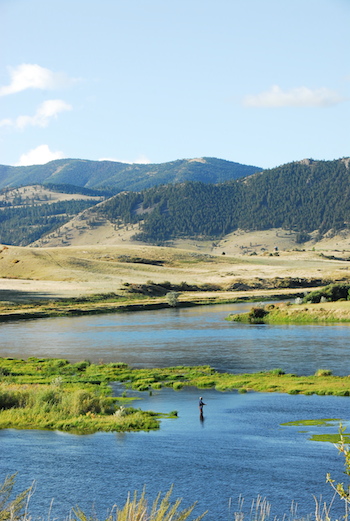 None of what you are about to read should arrive as a surprise, as hatches do shift in strength over time. That’s been the case on Idaho’s Silver Creek, ditto on Montana’s Big Horn, and now on the Missouri River.
None of what you are about to read should arrive as a surprise, as hatches do shift in strength over time. That’s been the case on Idaho’s Silver Creek, ditto on Montana’s Big Horn, and now on the Missouri River.
Recently, comments from anglers prompted Montana Department of Fish, Wildlife and Parks to study the composition of aquatic macro invertebrates on the fabled Missouri and this is what they may have learned: dry fly fishing may not be as good as it used to be but the opportunities to drift scuds and sow bugs may never have been better. Or something like that.
The reasons are these: spring caddis and fall Baetis hatches have diminished but the number of crustaceans has increased. You’ll see that in the size and condition of the Missouri’s trout. They’re hogs. But you’ll notice it, too, if you’re a dry fly guy who is only interested in hatches. Here’s more from the Montana Standard.
Pete Cardinal has outfitted anglers on the Missouri River below Holter Dam for more than three decades.
In that time, he has noticed changes in the aquatic insect community that altered the way he fishes the blue ribbon stretch. Legendary hatches of caddis and mayflies — larger insects popular among dry fly anglers — began to noticeably decline about a decade ago, he said.
“The aquatic community is shifting. In May and June we’d have fairly large, tan-colored caddis and we haven’t seen them in seven or eight years,” he said. “The fall baetis are gone. We used to have hatches overlap and now we’ll go a week or two with nothing much going on.
“On the flip side, there’ve never been more scuds and snails.”
Cardinal chairs the board of the Upper Missouri Watershed Alliance, which last year commissioned a baseline study by Morrison Maierle Inc., of macroinvertebrates on the Missouri River from Toston to Cascade. Macroinvertebrates include the aquatic insect species such as caddis, mayflies, stoneflies, baetis, tricos, midges and PMDs, plus non-insects such as scuds, earthworms and sowbugs.
As a baseline, the study aims to provide data that future studies can compare and look for changes and trends.
Past sampling of the river includes long-term monitoring at a single site near the dam by NorthWestern Energy, as well as a 2005 study by the Montana Department of Environmental Quality that included macroinvertebrates.
While the alliance’s study resampled the DEQ sites, it is important to note that DEQ’s methods collected comparable species and READ MORE
